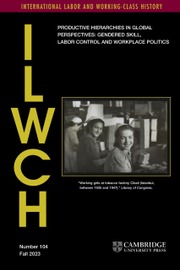Article contents
Marketing the Modern: Department Stores, Consumer Culture, and the New Middle Class in Interwar Japan
Published online by Cambridge University Press: 07 February 2001
Abstract
From its origins in the industrial fairs and emporiums of the 1870s and 1880s, the department store, by the 1920s, had become a fixture of the modern cityscape and a key agent for the cultural production of the new middle class in Japan. Central to this role was the equation of the department store with the culture of consumption that became one of the hallmarks of the Taishō (1912–1926) and Shōwa (1926–1989) periods. In their search for a growing mass market, department stores worked to commodify and modernize the material culture of everyday life. In the process they sold a vision of the modern defined as the totality of consumer products available at their stores. The cultural authority of the department store assured the spread of this particular definition in the 1920s and 1930s, supplanting earlier ideas that embodied modernity in such things as parliamentary government, railroads, and a colonial empire. In other words, department stores shaped an idea of the modern that associated it with the daily practices of private life rather than the public institutions of the nation-state and industrial capitalism.For a discussion of this earlier concept of the modern, see Carol Gluck, Japan's Modern Myths: Ideology in the Late Meiji Period (Princeton, 1985).
- Type
- Class and Consumption
- Information
- Copyright
- © 1999 The International Labor and Working-Class History Society
- 20
- Cited by




